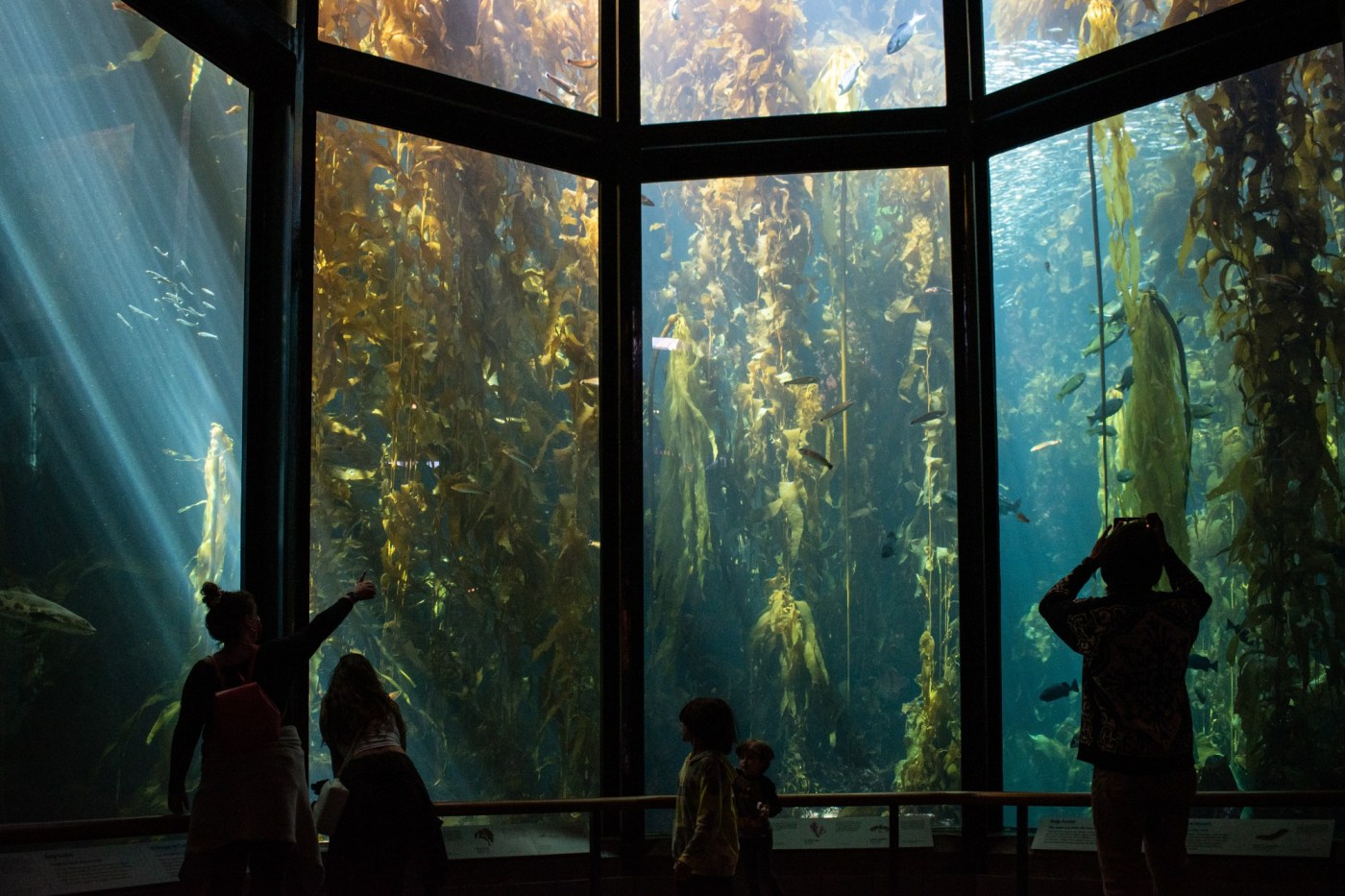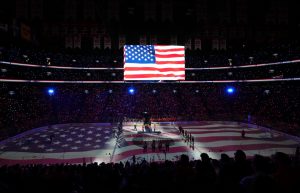MONTEREY – The brainchild of a group of young marine biologists, the Monterey Bay Aquarium has always had a focus on our local marine life and was at one time expected to be “just” a public educational institute. But over the past 40 years, it has evolved to emphasize the importance of ocean conservation – something deeply important to seaweed biologist turned aquarium co-founder and Executive Director Julie Packard.
Julie Packard. (Photo courtesy of Monterey Bay Aquarium)
The idea of building an aquarium near Monterey Bay had been talked about since at least the 1920s. But the vision that would eventually become the Monterey Bay Aquarium came from a group of scientists and students at Stanford’s Hopkins Marine Station in Pacific Grove in the 1970s. That included Packard, her sister Nancy and her brother-in-law, Robin Burnett, Looking at the neighboring Hovden Cannery, which was no longer in business but had been purchased by Stanford to prevent development, they could imagine it being the perfect spot for an aquarium.
“The inspiration for us was that we had all gone to college and worked on our graduate degrees here (at Hopkins),” Packard said. “We were all marine biologists. We had spent a lot of time in this amazing piece of nature that we have right here, and we wanted to share it.”
RELATED: The nation’s top 10 aquariums include this Monterey Bay gem (of course!)
The aquarium has become a world-class attraction, bringing in visitors from all over. Packard envisioned the reach of the aquarium’s reputation to be broader than just the Monterey community, but not worldwide. She was wrong.
“We didn’t have any idea that the aquarium would develop such a reputation,” Packard said. “Well, first of all, that we would have such a strong visitor response. Our first year, we had over two million people, which is about twice what we were anticipating. And then through word of mouth, we just developed such a following worldwide, which was fantastic.”
Packard said their first big media splash was being featured on the cover of Sunset Magazine. Now the aquarium can reach audiences like never before thanks to social media.
“It’s so exciting because we have a lot of followers who have never been to the aquarium and who never will come to the aquarium, for that matter. Either they live far away, or maybe they have a disability, they’re homebound, or, who knows, many, many issues,” Packard said. “And it’s just such an amazing way to extend the message and extend our reach.”
The early days
The Monterey Bay Aquarium has worked to put an emphasis on telling stories Packard says, “there’s so many crazy and curious stories to tell about the ocean and so many different habitats here in Monterey Bay, you just never run out of stories.”
Over the past 40 years, some of Packard’s favorite stories come from the early days of the aquarium, working with architects, engineers and their steering committee of biologists.
They had many ideas of what animals they wanted to show, because as scientists they knew the animal’s stories were engaging. However, their potential as an exhibit that the public would want to see was a challenge.
“There was just a lot of creative tension among the planning team, because we had the founding group biologists, we had all these stories to tell,” Packard said. “We were pretty naive about what the public would be interested in, at first. We had some amazing aquarium professionals that knew animal care and what the public would be interested in. We had my father (David Packard, co-founder of Hewlett-Packard), who was a powerful, brilliant businessman and really didn’t have a lot of familiarity with a lot of aquariums. He was very practical.
“There was a lot of that, which was fun and, well, it wasn’t always fun, but it was memorable experiences,” Packard said.
Packard and her team took a very hands-on approach to building the Monterey Bay Aquarium, with heavy involvement from their founding planning committee, composed of their marine biology founders, David and Lucille Packard, who were the funders, a director of husbandry and consultants.
“We originally naively thought we could just remodel a lot of this building, which shows how much we knew about doing building project,” she said. “It was a very steep learning curve for everyone.”
From the start, the founders’ idea was for the aquarium to be a community resource.
“On opening day, when my father made the opening speech and we opened the doors for people to come in, his words were ‘come enjoy your aquarium’ when all those thousands of people were out in Cannery Row in the street and had been waiting for years to be able to experience this new aquarium,” said Packard. “So that idea of just the extent to which the aquarium was so embraced by the community, it’s just been amazing.”
A focus on ocean conservation
From the beginning, the aquarium has held the notion that very few people have the opportunity to see what’s under the ocean surface. Many in the aquarium’s leadership saw the opportunity to inform visitors of the need to protect the ocean, changing their mission statement in the late 1990s, “to inspire conservation of the ocean.”
“Over time, we really put a lot more focus on bringing people into the picture and our relationship with the ocean and our impacts, and most importantly, what we can do to all work toward a healthy ocean for the future,” Packard said.
The aquarium has also shared stories to help convey its message, taking on topics such as overfishing or the sea otter population. “They were hunted nearly to extinction, so close, and have made a slow comeback over time,” Packard said.
“Monterey Bay had over 100 years of resource extraction,” Packard said. “The amazing ocean life bounty that was here drew people throughout the generations to do whaling and (hunt) sea otters and fish, sardines and all of that, and that all really took a toll.”
The aquarium has been focusing on a few critical ocean threats over the past several years, including unsustainable fishing and farming – which they have helped to combat with the Seafood Watch program, something Packard said she was particularly proud of.
“California has always been a leader in environmental policy, and so along with our national and international work, we’ve always had a big focus on California, which we intend to continue,” Packard said. “We have the only integrated statewide network of marine-protected areas and state waters. We have our National Marine Sanctuary, which has been expanded several times, and hopefully it’s going to be expanded again with the new Chumash Sanctuary down further south.”
Kayakers out in the Monterey Bay. (Arianna Nalbach – Monterey Herald)
More recently, the aquarium has become more involved with plastic pollution in the ocean because of the global ocean plastic treaty. The aquarium’s chief conservation officer, Margaret Spring, chaired a National Academy of Sciences study on the U.S. ocean plastic pollution and has been called on for the U.N. treaty.
Related Articles
Carmel-by-the-Sea weekend: Exploring Northern California’s most idyllic coastal retreat
The nation’s top 10 aquariums include this Monterey Bay gem (of course!)
Thar they blow! An abundance of whales near Bay Area beaches
A new plan seeks to protect California’s coast against a rising ocean. And it doesn’t require sea walls.
Packard also highlighted Assembly Bill 5454 passing as a big win in California. It is currently the most progressive single-use plastic law in the U.S. “Basically it’s to move to an extended producer responsibility scheme and reduce, or hopefully eliminate the plastic trash and single-use plastic problem that we have.
“Global climate change is the mother of all conservation issues,” Packard stressed. “Everything is connected to it and unless we slow that down and get things turned around, all the other efforts are not going to get very far.”
While global climate change can be a daunting concept, Packard and the aquarium continue to work to inform their audience about the connection between a healthy ocean and success in the climate change battle.
“I think a lot of the public, when they think about ocean conservation, they’re thinking about saving animals, saving whales and ocean wildlife, which is important to do, of course, but at an even more foundational level that affects us so directly, the ocean absorbs a huge amount of the heat that we’ve generated since the Industrial Revolution,” Packard explained. “It has a huge impact that’s making things a lot better than they would otherwise be.”
When the conservation movement began in the 1970s, it was always about the land Packard said. “We’re land-based mammals, and we are focused on what goes on in our habitat,” Packard said.
The ocean covers 71% of the planet, but in terms of volume, makes up over 95% of the living space, with all the plankton and photosynthesizing organisms needing to be there and be healthy for the ocean to do its job combating climate change.
“The ocean is our best friend in terms of solving climate change,” Packard said.
Packard will be receiving the John Laird Lifetime Achievement Award on Oct. 12 to recognize her global impact to ocean conservation and environmental protection.
EDITOR’S NOTE: As the Monterey Bay Aquarium counts down its 40th anniversary in October, The Herald will be doing a series of stories taking a closer look at the history, research work and behind-the-scenes management of the region’s most popular attraction. Recently, aquarium co-founder and Executive Director Julie Packard sat down with The Herald’s Arianna Nalbach to talk about the aquarium’s beginnings and the ongoing mission of the organization.












